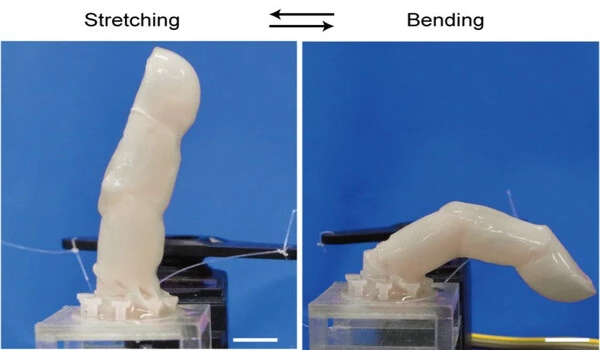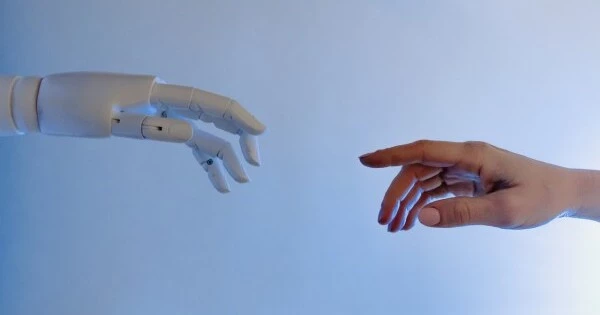Biohybrid robots made of both living and artificial materials have been at the center of many sci-fi fantasies, inspiring today’s robotic innovations, from action heroes to villainous assassins. It will be a long time before human-like robots walk among us in our daily lives, but Japanese scientists are bringing us one step closer by creating living human skin on robots. The method developed, which was published in the journal Matter, provided not only a robotic finger skin-like texture, but also water-repellent and self-healing properties.
A University of Tokyo team is bringing androids one step closer to reality by creating actual skin for their frames. The method produced a robotic finger skin-like texture as well as water-repellent and self-healing properties.
“The finger looks slightly ‘sweaty’ straight out of the culture medium,” says first author Shoji Takeuchi, a professor at the University of Tokyo, Japan. “Since the finger is driven by an electric motor, it is also interesting to hear the clicking sounds of the motor in harmony with a finger that looks just like a real one.”
The finger looks slightly ‘sweaty’ straight out of the culture medium. Since the finger is driven by an electric motor, it is also interesting to hear the clicking sounds of the motor in harmony with a finger that looks just like a real one.
Professor Shoji Takeuchi
One of the top priorities for humanoid robots that are frequently tasked with interacting with humans in healthcare and service industries is to appear “real” like humans. A human-like appearance can help with communication efficiency and likability. While current silicone skin for robots can mimic human appearance, it falls short in delicate textures such as wrinkles and lacks skin-specific functions. Attempts to create living skin sheets to cover robots have also met with limited success, owing to the difficulty of conforming them to dynamic objects with uneven surfaces.
“With that method, you have to have the hands of a skilled artisan who can cut and tailor the skin sheets,” says Takeuchi. “To efficiently cover surfaces with skin cells, we established a tissue molding method to directly mold skin tissue around the robot, which resulted in a seamless skin coverage on a robotic finger.”
To create the skin, the team immersed the robotic finger in a cylinder filled with a solution of collagen and human dermal fibroblasts, the two main components that make up the skin’s connective tissues. Takeuchi attributes the study’s success to the natural shrinking tendency of this collagen and fibroblast mixture, which shrank and tightly conformed to the finger. This layer, like paint primers, provided a consistent foundation for the next coat of cells — human epidermal keratinocytes — to adhere to. These cells make up 90% of the skin’s outermost layer, giving the robot a skin-like texture and moisture-retaining barrier properties.

Although silicone skin, which is currently used by robot makers, can mimic human appearance, the researcher says it “falls short” when it comes to recreating delicate textures, such as wrinkles. According to Takeuchi, they also lack skin-specific functions. Previous attempts to create living skin for robots have met with limited success. It has been difficult to get it to conform to the dynamic shapes of the human body, which have uneven surfaces.
The crafted skin was strong and pliable enough to withstand the dynamic movements of the robotic finger curling and stretching. The outermost layer was thick enough to be lifted with tweezers and repelled water, providing numerous advantages in performing specific tasks such as handling electrostatically charged tiny polystyrene foam, a material commonly used in packaging. When injured, the crafted skin could even self-heal like human skin using a collagen bandage that gradually morphed into the skin and withstood repeated joint movements.
“We’re surprised at how well the skin tissue conforms to the surface of the robot,” Takeuchi says. “However, this work is only the first step toward creating robots with living skin.” The developed skin is much weaker than natural skin and cannot survive for long without continuous nutrient supply and waste removal. Takeuchi and his colleagues intend to address these concerns by incorporating more sophisticated functional structures within the skin, such as sensory neurons, hair follicles, nails, and sweat glands.
“I believe that living skin is the ultimate solution for giving robots the look and feel of living creatures because it is the same material that covers animal bodies,” Takeuchi says.
















